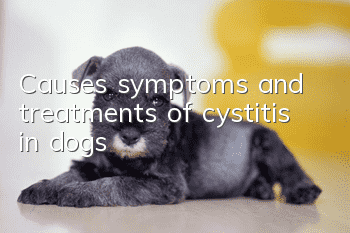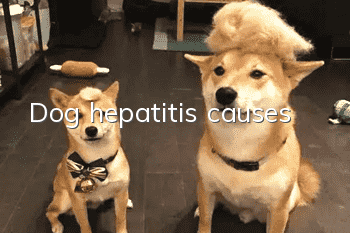Causes, symptoms and treatments of cystitis in dogs

The causes of cystitis in dogs:
1. Infection with pathogenic microorganisms, such as Escherichia coli, Staphylococcus, Streptococcus, Proteus, etc.
2. The spread of inflammation in adjacent organs, such as nephritis, ureteritis, prostatitis, and urethritis. Especially when female dogs suffer from vaginitis or endometritis, the inflammation can easily spread to the bladder and cause cystitis.
3. Mechanical damage, such as urinary catheter damage, bladder stones, etc., can stimulate mucosal inflammation.
Symptoms of cystitis in dogs:
1. The symptom is painful urination. The sick dog urinates frequently, or makes urinating postures, but only discharges a small amount of urine each time or continuously discharges it in drops (urinary drip), and shows pain and uneasiness.
2. In severe cases, due to swelling of the bladder neck mucosa or spasmodic contraction of the bladder sphincter, it can cause anuria, making the sick dog feel uneasy and groan in pain.
3. The symptoms of chronic cystitis in dogs are similar to acute cystitis, but the degree is milder and the course of the disease is longer.
Treatment measures for dog cystitis:
1. Improve feeding and management, give them proper rest, and feed them non-irritating, nutritious and easily digestible food. feed. The feeding of high protein feed should be properly controlled.
2. Rinse the bladder with disinfectant or astringent. First use a urinary catheter to drain the accumulated urine in the bladder, rinse it repeatedly with lukewarm saline, and then flush it with medicinal solution. Disinfection can be carried out with 0.05% potassium permanganate solution and 0.1% Reifonol solution. 1%-3% boric acid solution, 1%-2% alum solution, etc. can be used for convergence.
3. For severe cystitis, after flushing the bladder, instill 800,000 to 1.2 million units of penicillin (dissolved in 50 to 100 ml of distilled water) into the bladder, and apply penicillin, streptomycin or other drugs systemically. antibiotic.
4. Urinary tract disinfectant can be used appropriately.
5. Pay attention to preventing microbial invasion and infection. Disinfection and sterility must be achieved when performing urinary catheterization. Diseases of other urinary organs should be treated promptly to prevent their spread.
- Symptoms and Treatment of Cataracts in Dogs
- How to train German Shepherd title-taking skills
- Nice and domineering female horse dog names
- What to do if your dog’s hair turns yellow and turns white
- Why pets need deworming
- The difference between canine distemper and parvovirus
- Symptoms and treatments for Teddy dog colds
- What happens if Alaska has diarrhea after giving birth to puppies? Here are some tips for you!
- What are the causes of Teddy's body odor?
- How to train Pomeranian to shake hands?



